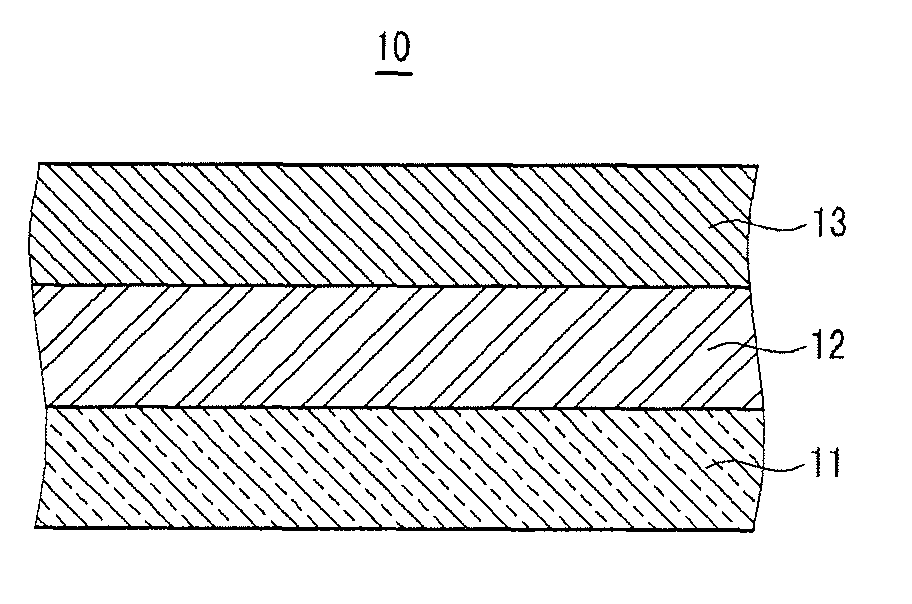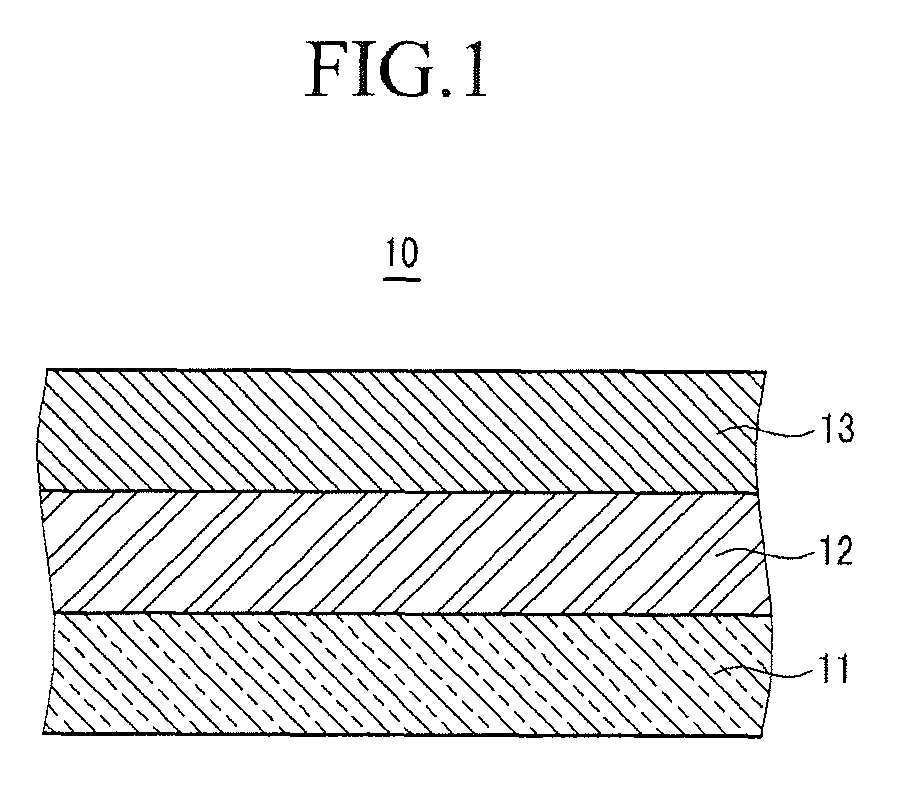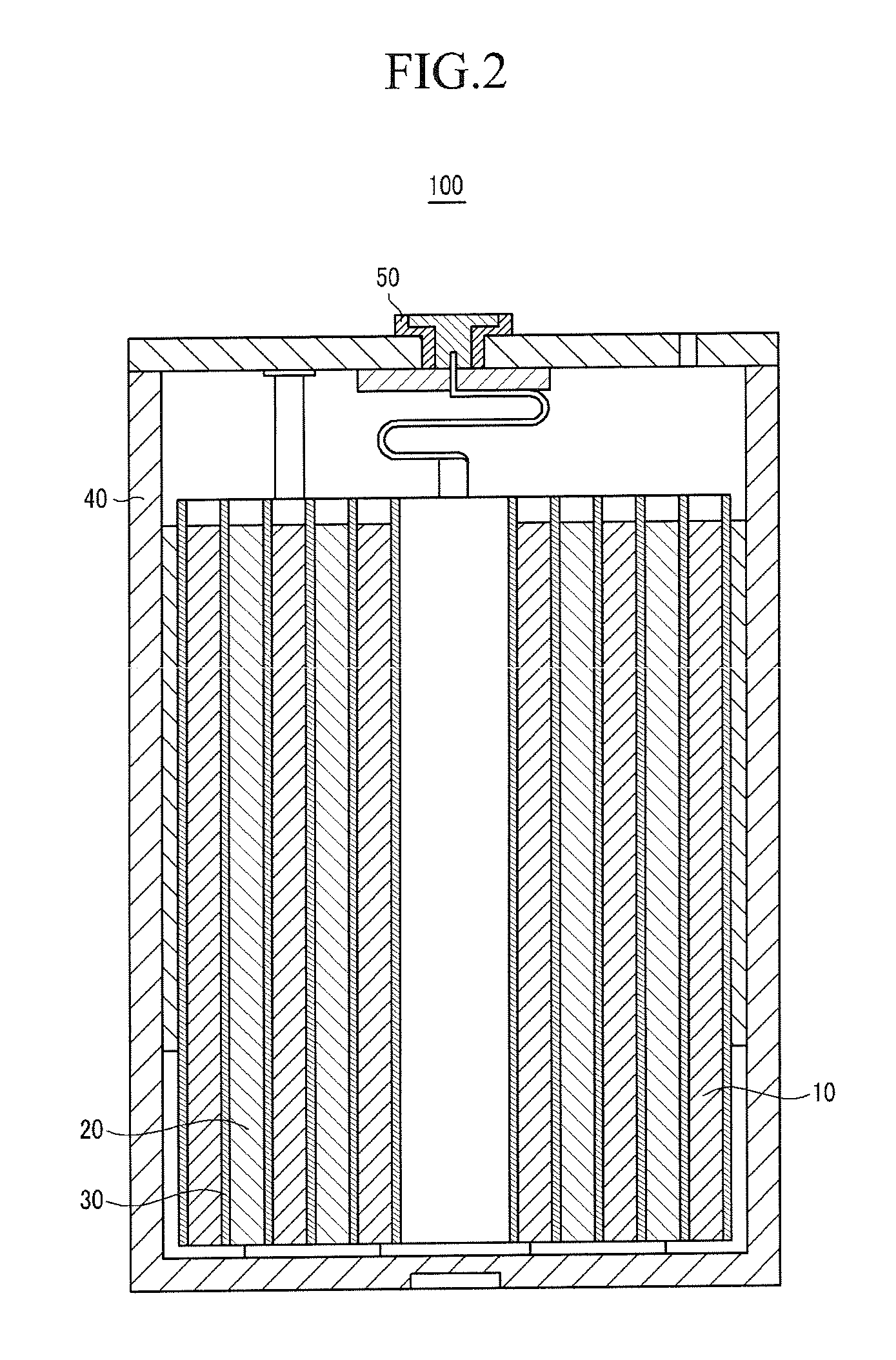Positive electrode for rechargeable lithium battery and rechargeable lithium battery including same
a lithium battery and positive electrode technology, applied in cell components, alkaline accumulator electrodes, electrochemical generators, etc., can solve the problems of graphite negative active material density, low capacity in terms of energy density per unit volume, graphite negative active material explosion or combustion, etc., to achieve excellent reliability and stability, and suppress side reactions
- Summary
- Abstract
- Description
- Claims
- Application Information
AI Technical Summary
Benefits of technology
Problems solved by technology
Method used
Image
Examples
example 1
[0140]LiCoO2, as a positive active material, polyvinylidene fluoride (PVDF), as a binder, and Super-P, as a conductive material, were mixed in a weight ratio of 94:3:3 in an N-methylpyrrolidone solvent, to prepare a positive active material slurry. The positive active material slurry was coated on a 20 μm-thick aluminum current collector, dried, and compressed to fabricate a positive electrode.
[0141]100 parts by weight of PVDF, including 10 mole % HFP, was dispersed in acetone, and then 500 parts by weight of fumed silica, having an average particle diameter of 100 nm, and surface-treated with hydrophobic HMDS (hexamethyldisilazane), was added to prepare a coating composition. The coating composition was coated on the surface of the positive active material layer, and dried, to fabricate a positive electrode.
[0142]Carbon, as a negative active material, and PVDF, as a binder, were mixed in a weight ratio of 94:6 in an N-methylpyrrolidone solvent, to prepare a negative active material...
example 2
[0144]The rechargeable lithium battery cells were fabricated according to the method of Example 1, except that the untreated fumed silica was used, instead of the hydrophobic surface-treated silica, as an inorganic additive.
example 3
[0145]The rechargeable lithium battery cells were fabricated according to the method of Example 1, except that Al2O3 was used, instead of the hydrophobic surface-treated silica, as an inorganic additive.
PUM
| Property | Measurement | Unit |
|---|---|---|
| particle diameter | aaaaa | aaaaa |
| particle diameter | aaaaa | aaaaa |
| mass density | aaaaa | aaaaa |
Abstract
Description
Claims
Application Information
 Login to View More
Login to View More - R&D
- Intellectual Property
- Life Sciences
- Materials
- Tech Scout
- Unparalleled Data Quality
- Higher Quality Content
- 60% Fewer Hallucinations
Browse by: Latest US Patents, China's latest patents, Technical Efficacy Thesaurus, Application Domain, Technology Topic, Popular Technical Reports.
© 2025 PatSnap. All rights reserved.Legal|Privacy policy|Modern Slavery Act Transparency Statement|Sitemap|About US| Contact US: help@patsnap.com



